As you can see, below is a high-gloss grand piano that needs to be moved without damage, especially to its fine finish.
So it needs to be well-padded with a few layers of blankets securely taped to it to protect its irreplaceable lid and the finish on its sides.
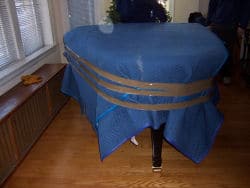
Once the piano is padded and the piano board is secured to its side, the next step is to remove its left leg.
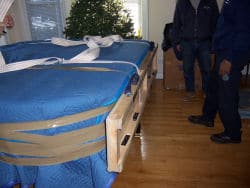
We do this by raising the piano up about 6″ using a side-braced dolly under the front of the left side of the piano.

Then we unscrew the leg, label it and label that leg’s piano underside for re-match later.
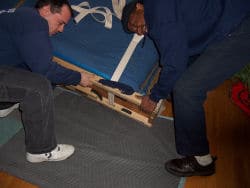
Next, we set the piano on its piano board down onto a pad on the floor. Even though this maneuver will put a bit of extra strain on the other 2 legs that are still attached, it won’t damage them.
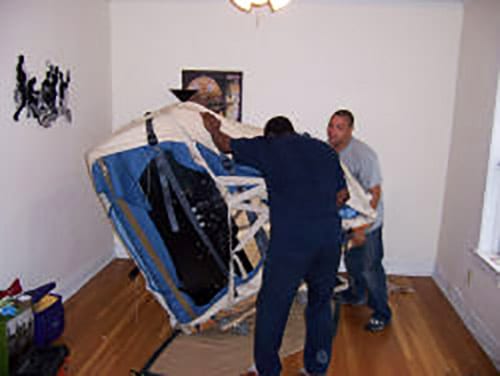
Then we finish tipping it up until it is standing on its side on the piano board on a pad protecting the floor. Then we finish removing its legs.
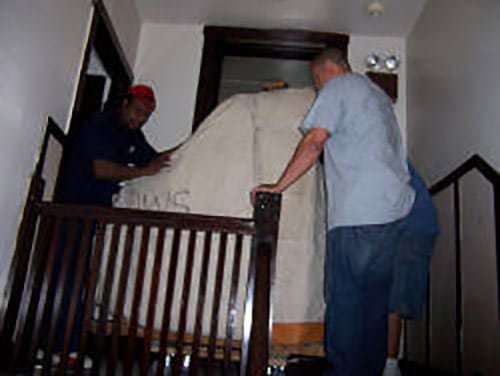
Next, it’s mounted up onto a dolly and pushed to the top of the landing which is the actual starting point for the carry.
The keyboard end of the piano is aimed at the stairway and, with 2 men down below, we lift it a bit, pushing it right off of the dolly onto the stairs in order to begin carrying and sliding it down.
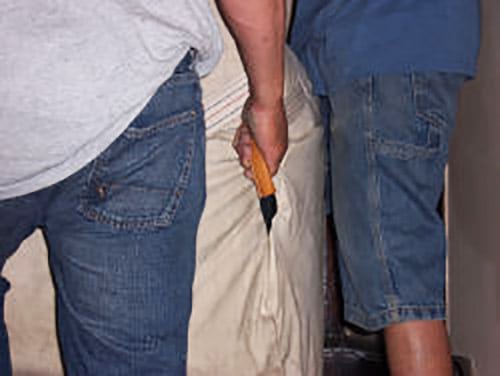
The piano cover’s handholds come in real handy now but is not an absolutely necessary piece of equipment to carrying the piano down the stairs.
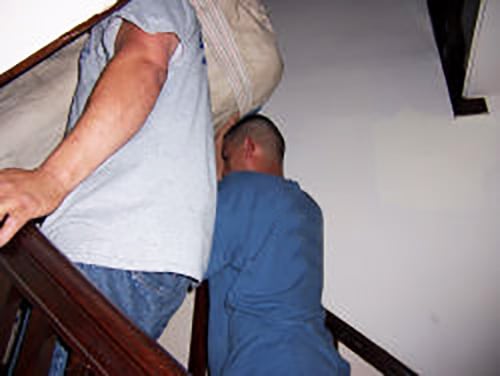
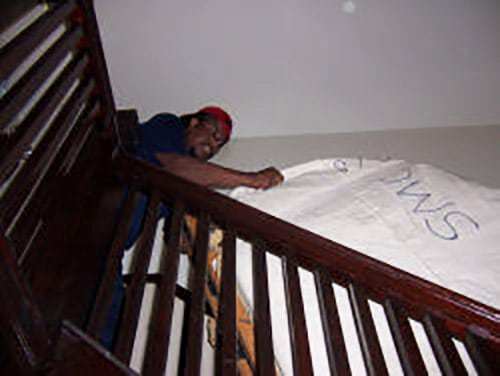
The 2 bottom men at this point are holding the piano’s weight back from causing it to plummet out of control down the stairs while the top man is holding the piano board’s handhold to contribute to their efforts
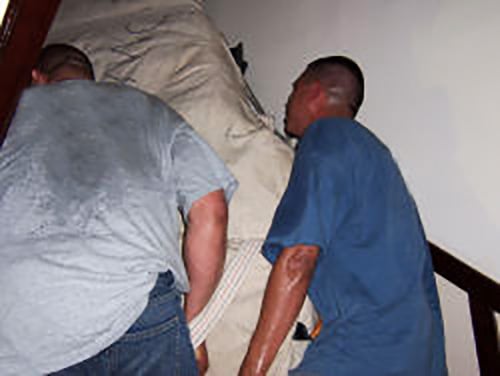

As you can see this is where piano moving gets scary and very difficult. The men on the bottom of the piano have to keep its weight from overwhelming them so that they don’t get hurt and they don’t damage the piano or the stairway or the banister.
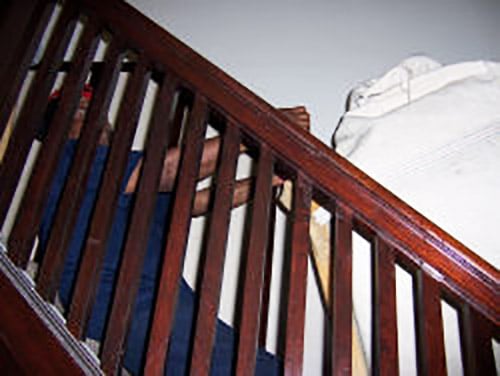
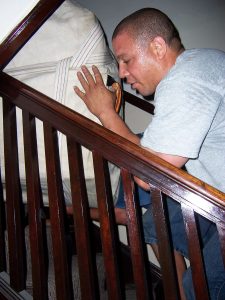
The man on top struggles with them to do the same.
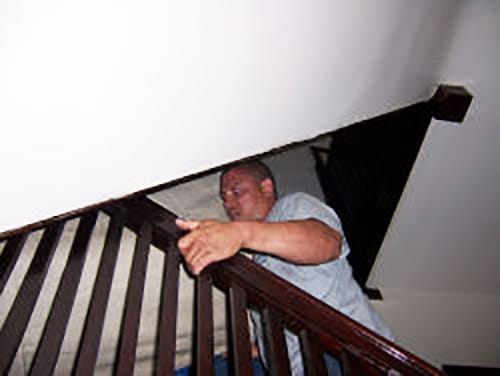
Most times, the man on the banister side will use it to brace him and help him carry the piano so it must be very sturdy.
If it’s not, you should not use that particular stairway to move the piano.
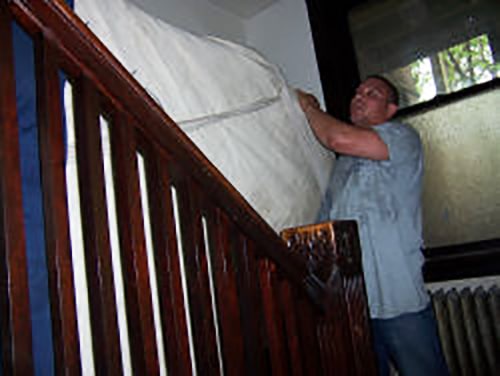
Most piano moving is done using outside stairs because minor knicking or chipping of them is usually ok.
In this particular case, the inside stairway was carpeted so sliding it on the skidboard did no damage.
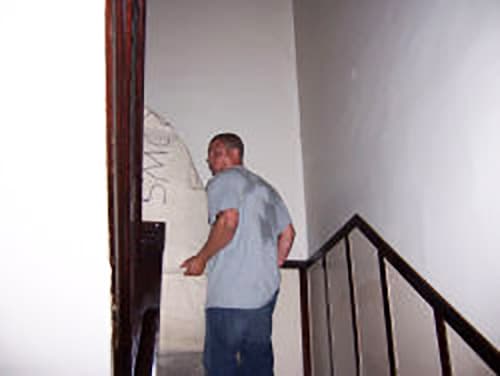

When the piano gets down to the landing, remount on it onto the dolly for the turn. Then, continue down that flight of steps using the exact same process as has already been described.
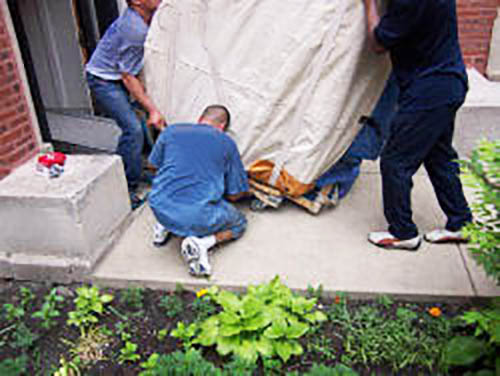
Once on ground level, again remount the piano on the dolly for further transport.

Now it’s smooth sailing to push it right up to the truck’s ramp.
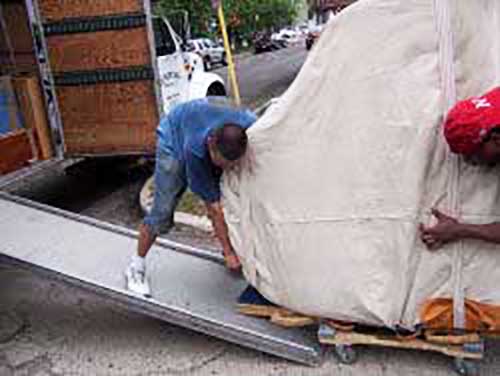
Next, aim the butt end of the piano towards the ramp because the other side of the piano (its keyboard) is braced against the piano board’s lip to keep it from slipping off on inclines.
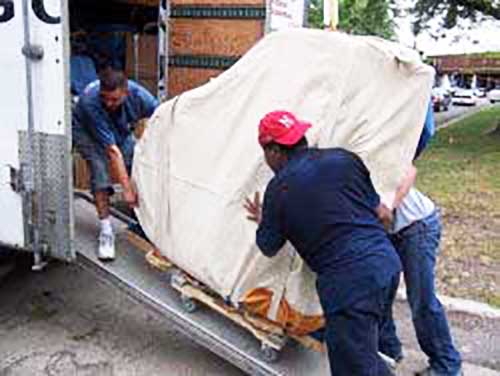
Then just push it up the ramp onto the truck.
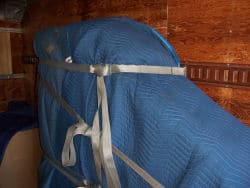
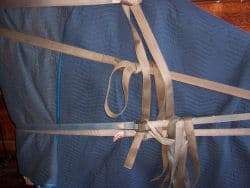
Finally, take the piano off of the dolly and double or triple strap it to the truck’s front wall or to the front of one of the truck’s side walls.
Carrying a grand piano to the moving truck is a very dangerous job – dangerous for the people involved in the move and dangerous for the super-expensive musical instrument too. Don’t risk any costly damage – instead, trust experienced piano movers with this tough, tough task.


